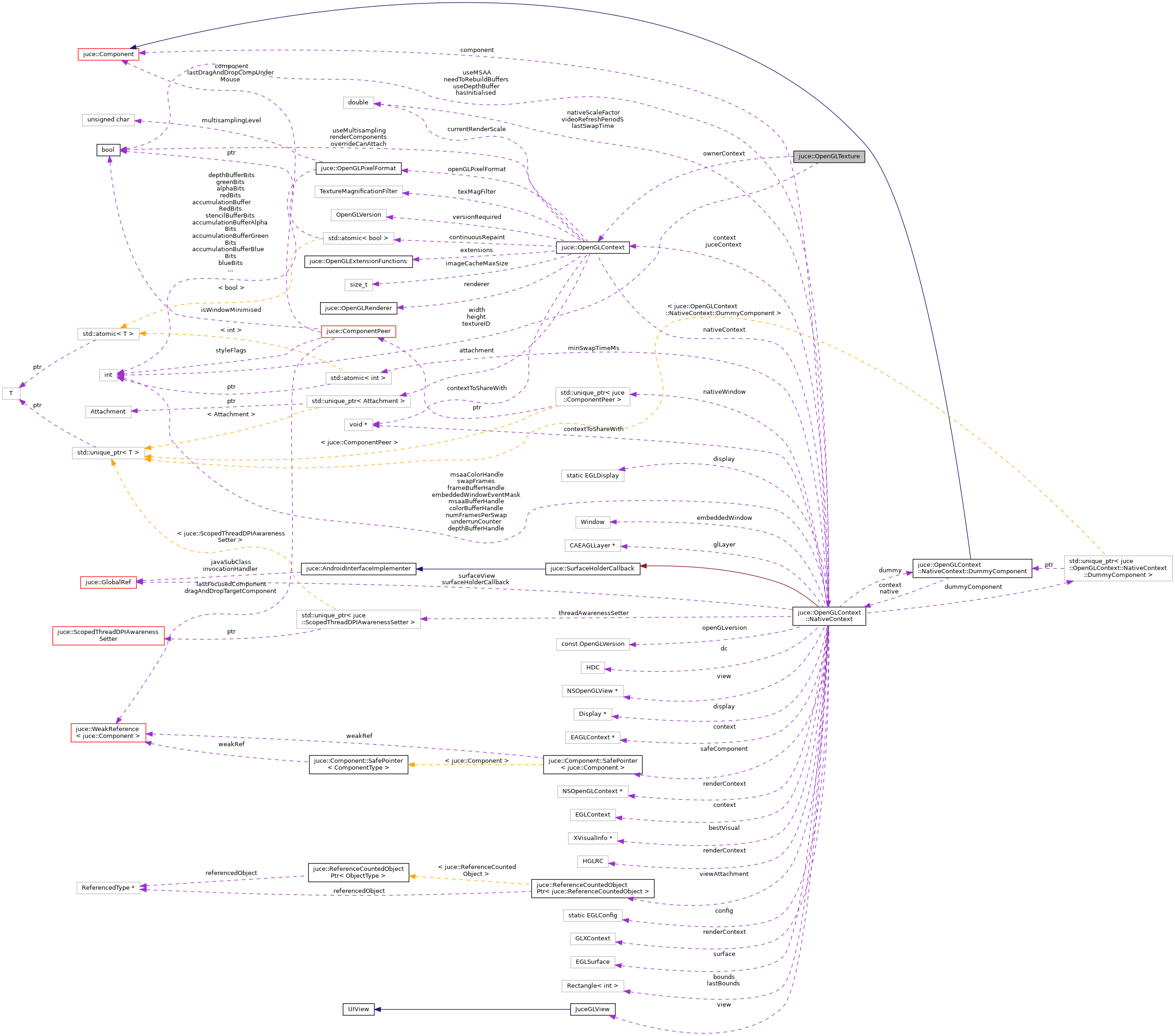Creates an openGL texture from an Image.
More...
#include <juce_OpenGLTexture.h>
Creates an openGL texture from an Image.
@tags{OpenGL}
◆ OpenGLTexture()
| juce::OpenGLTexture::OpenGLTexture |
( |
| ) |
|
◆ ~OpenGLTexture()
| juce::OpenGLTexture::~OpenGLTexture |
( |
| ) |
|
◆ bind()
| void juce::OpenGLTexture::bind |
( |
| ) |
const |
Binds the texture to the currently active openGL context.
◆ create()
| void juce::OpenGLTexture::create |
( |
int |
w, |
|
|
int |
h, |
|
|
const void * |
, |
|
|
GLenum |
, |
|
|
bool |
topLeft |
|
) |
| |
|
private |
◆ getHeight()
| int juce::OpenGLTexture::getHeight |
( |
| ) |
const |
|
inlinenoexcept |
◆ getTextureID()
| GLuint juce::OpenGLTexture::getTextureID |
( |
| ) |
const |
|
inlinenoexcept |
Returns the GL texture ID number.
◆ getWidth()
| int juce::OpenGLTexture::getWidth |
( |
| ) |
const |
|
inlinenoexcept |
◆ isValidSize()
| static bool juce::OpenGLTexture::isValidSize |
( |
int |
width, |
|
|
int |
height |
|
) |
| |
|
static |
Returns true if a texture can be created with the given size.
Some systems may require that the sizes are powers-of-two.
◆ loadAlpha()
| void juce::OpenGLTexture::loadAlpha |
( |
const uint8 * |
pixels, |
|
|
int |
width, |
|
|
int |
height |
|
) |
| |
Creates an alpha-channel texture from an array of alpha values.
If width and height are not powers-of-two, the texture will be created with a larger size, and only the subsection (0, 0, width, height) will be initialised. The data is sent directly to the OpenGL driver without being flipped vertically, so the first pixel will be mapped onto texture coordinate (0, 0).
◆ loadARGB()
| void juce::OpenGLTexture::loadARGB |
( |
const PixelARGB * |
pixels, |
|
|
int |
width, |
|
|
int |
height |
|
) |
| |
Creates a texture from a raw array of pixels.
If width and height are not powers-of-two, the texture will be created with a larger size, and only the subsection (0, 0, width, height) will be initialised. The data is sent directly to the OpenGL driver without being flipped vertically, so the first pixel will be mapped onto texture coordinate (0, 0).
◆ loadARGBFlipped()
| void juce::OpenGLTexture::loadARGBFlipped |
( |
const PixelARGB * |
pixels, |
|
|
int |
width, |
|
|
int |
height |
|
) |
| |
Creates a texture from a raw array of pixels.
This is like loadARGB, but will vertically flip the data so that the first pixel ends up at texture coordinate (0, 1), and if the width and height are not powers-of-two, it will compensate by using a larger texture size.
◆ loadImage()
| void juce::OpenGLTexture::loadImage |
( |
const Image & |
image | ) |
|
Creates a texture from the given image.
Note that if the image's dimensions aren't a power-of-two, the texture may be created with a larger size.
The image will be arranged so that its top-left corner is at texture coordinate (0, 1).
◆ release()
| void juce::OpenGLTexture::release |
( |
| ) |
|
Frees the texture, if there is one.
◆ unbind()
| void juce::OpenGLTexture::unbind |
( |
| ) |
const |
Unbinds the texture to the currently active openGL context.
◆ height
| int juce::OpenGLTexture::height |
|
private |
◆ ownerContext
◆ textureID
| GLuint juce::OpenGLTexture::textureID |
|
private |
◆ width
| int juce::OpenGLTexture::width |
|
private |
The documentation for this class was generated from the following file:
